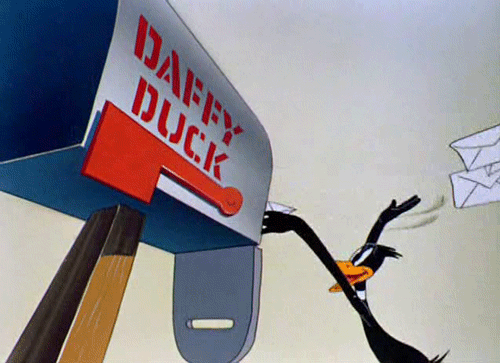How We Went From 5% to 25% Open Rate for 100k Subscribed Audience
Ten years ago, each email held a mystery, a Pandora’s box of sorts, filled with surprises. Back then, information was sought after, hence, the delivery of such information was highly appreciated. Today, there is only one change. Information is no longer a sought-after factor of life. The human mind is overwhelmed by the plethora of things that pass us by every time we log on to a website, every time we turn on the television, or even when we take a walk down the street. The saturation of information is built upon constricted mind space; a person can remember only a fraction of the things that fly past them.
Before we proceed, you must understand what open rate is. Since you ‘opened’ this link, you probably have some idea. Open rate is ratio of the number or people who opened you email to the total number of people who received it. The open rate signifies that you could make a connect with the audience, compelling them to open the email.
This is the story of how we successfully increased our open rate exponentially.
Stage 1: Build Your Subscriber Base

Subscriber Usage Analysis and Open Rate Increase
We focused on increasing the subscribers for our mailers by reaching to our prospective and current clients. For a logistics tech company to create a mark as an industry leader, thought leadership is a necessary association. We involved our core clientele in AMA sessions to develop community interactions. We set up online conferences for all these industry experts to interact freely. Soon we found ourselves receiving requests from all corners of the entrepreneurial spectrum for signups. We succeeded in positioning ourselves as a tech company dedicated towards sharing knowledge. We crossed the 100k subscribers mark within a year of our first mailer campaign.
Stage 2: Identify and Analyze the Open Rate

Subscriber Usage Analysis and Open Rate Increase
When we interacted with our prospective clients, we used mailers as a tool to educate them about the benefits of logistics management software for their company. Our mailers were simple, signifying that we would offer free demos for our route optimization solution and GPS vehicle tracking system. After some strings of mailers, we found our open rate hover around 5%. We were troubled by two realizations: (1) We were not able to reach a fair share of our audience; (2) Many of our subscribers were unaware of any product or feature developments we set in place.
We felt the information that we sent across in the world was essentially lost. Our open rates, were well below the industry standards. We sat down to analyze our emails from the subscriber’s point of view. Here is what we figured:
- The subscriber has a limited attention span, through which multiple sources of information pass through regularly. Along with an email open rate, there is also a mental ‘open rate’. This mental open rate stands for how many subscribers found our mailers informative enough to get attracted towards it; mentally drawn to the concept. For a tech company, an association with the mind of the audience is of the utmost importance.
- To draw the subscriber’s attention to our mail, through the clutter, we needed a hook within the subject line.
- To increase the mental activity, while the subscriber went through our mail, we needed to make it simple and interactive.
- To increase the Click Through Rates (CTRs) for our mails, we needed to strategically place the Call to Action link (CTA). Afterall, CTA is the most important part of the mailer.
Stage 3: Reset Mailer Strategies

Subscriber Usage Analysis and Open Rate Increase
We followed the following strategies:
- Restructure subscriber groups
As we saw earlier, there is a mental open rate for all individuals. Any person, in some way, follows the ‘What’s In it For Me’ principle. The subscriber should understand a clear value from the mail. Now we had a single large subscriber group where we hosted mails. We analyzed our content and found that not all things were relevant to everyone. Our route optimization solution and GPS vehicle tracking system would be very informative for the tech department, but it would mean little to the marketing or procurement specialist. Even a person who has little experience with logistics management solutions would find in-depth details irrelevant.
We had to curate our content based on different subscribers. We made subgroups within our subscribers based on their field of interest. We created different versions of the same mail and sent it to each specific subgroup. A tech guy would receive a mail outlining the technical superiorities of our route optimization solution. A marketing person would receive a mail covering how the same route optimization solution would help them differentiate their service amongst competitors. An accounts manager would receive a mail describing the cost benefits of the route optimization solution. All these mails had identical content, only the focus and placement of pointers were realigned to match the preferences of the reader.
- Engaging subject lines
Now that we had specific subgroups for our mails, we designed specific subject lines for each. The subject lines followed a simple strategy. ‘Title, Content, Context’. We figured that the subject line is a six-word game. We identified the best associative words that were relevant to each subgroup. We then identified the title point of the mail, this was the main concept that we wanted to convey. The content part held the main body of the concept, and the context tried to make the title and content relevant to the reader. For all the subgroups, the title and content was, more or less, same. We varied the context to suit the nature of the subgroups. If the title and content that we wanted to convey was ‘route optimization solution’, then the context was either, ‘Optimize with’, ‘Save costs’, or ‘Rise above the competition’ based on the end reader.
- Anti-spam words
There were instances, where we found that our mails ended up in the spam folders. We audited the mailer content and found that words that focused on eliciting an impulse reaction from the reader should be avoided. We took out the part about our ‘free’ demo and replaced it with ‘Click here for a demo’. Similarly, we removed any reference to a short-term offer or deals from the content. The end product was a very clean, professional, informative mailer with clear controls for the reader, to either ‘Click to know more’ or to ‘Contact’.
We pursued these strategies for around two months, and surely, we reached a consistent 25% open rate for all our mailers. We still experiment with the structure of our content and the timing of the mailers, as we intent to build a content community revolving around knowledge sharing. We tried different sets of Call to Actions where the reader could just forward the mail to a friend. This feature has seen our subscriber grow at a steady pace.

Subscriber Usage Analysis and Open Rate Increase
The golden rule to follow here, is to ‘Always respect the reader as an audience’. Only then would you see similar results at your own company.
203






@LogiNext